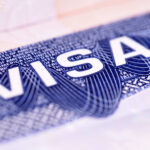
New Zealand Study Visa Essential Guide
New Zealand Study Visa: Your Essential Guide to Studying in
Strtasen Immigration | Award-winning Immigration Consultancy
Navigating the world of visas can be daunting, especially with varying requirements and procedures across countries. Whether you’re planning to study, work, or travel abroad, understanding the visa process is crucial. This guide breaks down the different types of visas and the general application procedures to help you embark on your international journey with confidence.
Navigating the world of visas can be daunting, especially with varying requirements and procedures across countries. Whether you’re planning to study, work, or travel abroad, understanding the visa process is crucial. This guide breaks down the different types of visas and the general application procedures to help you embark on your international journey with confidence.
While specific procedures vary by country and visa type, the general steps include:
Identify the visa category that aligns with your purpose of travel. For instance, if you’re planning to study, a student visa would be appropriate.
Each visa type has specific criteria, such as:
Fill out the required application form accurately. For U.S. non-immigrant visas, this would be the DS-160 form.
Prepare necessary documents, which may include:
Submit the required application fee. Fees vary depending on the visa type and processing country.
Many visa applications require an interview at the respective embassy or consulate. Be prepared to answer questions about your travel plans, background, and intentions.
Processing times vary. Some visas may be approved within days, while others could take weeks or months.
Embarking on international travel or relocation is an exciting venture. By understanding the visa process and preparing diligently, you can navigate the complexities with ease and focus on the opportunities that await you abroad.

New Zealand Study Visa: Your Essential Guide to Studying in

Visa Consultancy Expert Tips: Navigate Immigration with Confidence Immigration can

Work Visa Guide: Everything You Need to Know Dreaming of

Student Visa: How to Secure Your Study Permit for Canada,